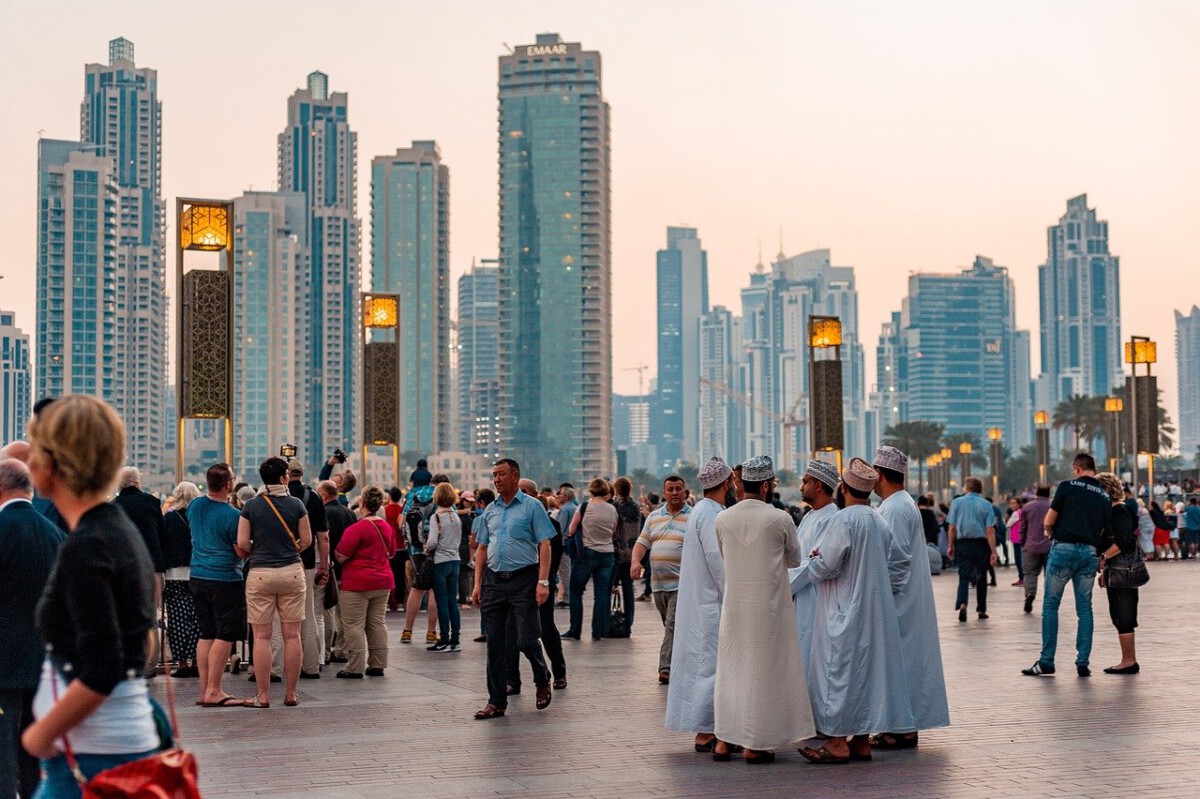Definition of Non-Tariff Nations

Non-tariff nations are unique in the global landscape because they do not impose import or export tariffs on goods and services, making them highly attractive for travelers and investors alike. These countries often have smoother travel processes, with less paperwork and fewer restrictions for international visitors. The absence of tariffs often translates into lower costs for tourists, from cheaper shopping to more affordable dining experiences. Singapore, the United Arab Emirates, and many Caribbean destinations are prime examples that have leveraged their non-tariff status to attract more visitors. Tourism in these places can account for up to 30% of their GDP, according to World Bank data. The open economic policies often encourage innovation in tourism services and infrastructure, making these destinations more appealing. The ease of access and competitive prices are major draws for global tourists who seek hassle-free vacations. As a result, non-tariff nations have become magnets for travelers looking for both value and variety.
The Rise of Digital Nomadism

The explosion of remote work has dramatically increased the number of digital nomads, with many choosing non-tariff nations for their flexibility and affordability. Countries like Mexico, Portugal, and Thailand are now popular hotspots for remote workers who can stay for extended periods due to relaxed visa rules. In 2022, more than 35 million Americans described themselves as digital nomads, and many flocked to countries that offered simple entry and no tariffs. These travelers bring steady income to local economies by renting apartments, using coworking spaces, and supporting cafes and shops. Fast internet, affordable living, and a welcoming atmosphere have made these places especially attractive. In cities like Lisbon and Playa del Carmen, the influx of digital nomads has led to booms in real estate and service industries. The culture of work-from-anywhere is reshaping tourism, turning short-term visitors into long-term contributors. As the trend continues, more non-tariff nations are creating tailored programs to attract and retain this new wave of travelers.
Economic Benefits of Tourism

Tourism in non-tariff nations delivers major economic benefits, driving job creation and attracting foreign investment. The United Nations World Tourism Organization (UNWTO) reports that globally, tourism supports 1 in every 10 jobs, with the figure climbing even higher in tourism-dependent non-tariff countries. For many Caribbean nations, tourism forms over half of their employment base, making it essential for economic stability. The surge in visitors encourages the building of new hotels, restaurants, and attractions, leading to greater infrastructure development. Local businesses benefit from increased demand, and the money tourists spend is often reinvested in public services and amenities. Tourism taxes and fees can fund schools, hospitals, and transportation systems, improving life for everyone. For example, the Dominican Republic saw its tourism revenue jump by 11% in 2023, fueling broad economic growth. The positive ripple effect of tourist spending touches nearly every sector in these nations.
Cultural Exchange and Community Impact

The influx of tourists to non-tariff nations creates vibrant opportunities for cultural exchange, as visitors immerse themselves in local customs and festivities. Events like Indonesian temple ceremonies or Caribbean carnivals become memorable experiences for travelers while supporting local artists and businesses. Tourism gives communities a platform to proudly showcase their heritage, crafts, and culinary traditions to a global audience. However, there are challenges, such as the commercialization of local culture or the risk of losing authenticity. Some communities have faced pressure to adapt their customs to tourists’ preferences, which can erode cultural identity over time. Still, when managed well, tourism strengthens pride and provides funding for cultural preservation projects. Local engagement in tourism planning ensures that community voices guide development. Balancing economic gains with respect for tradition is key to long-term success.
Environmental Considerations

The rapid growth of tourism in non-tariff nations brings environmental challenges, especially as natural resources come under strain from increased visitor numbers. Popular destinations like Costa Rica have responded by leading sustainable tourism initiatives that protect rainforests and wildlife while offering eco-friendly travel experiences. Programs focus on conservation, responsible waste management, and education for both locals and visitors. According to the Global Sustainable Tourism Council, such measures can lower carbon emissions and help preserve biodiversity. However, not all non-tariff nations have adopted robust environmental safeguards, and some have experienced pollution, habitat loss, or water shortages. The pressure on delicate ecosystems can be intense when infrastructure grows faster than environmental management. Experts recommend that tourism planning incorporate strict sustainability standards to reduce negative impacts. Ongoing investment in green practices is essential for protecting these destinations for future generations.
The Role of Social Media

Social media has become a powerful tool in the tourism boom for non-tariff nations, as travelers share stunning photos and stories with millions of followers. Instagram, TikTok, and YouTube have turned lesser-known spots into viral sensations almost overnight. In 2022, the Maldives saw a 20% rise in tourist arrivals, a surge many attribute to the country’s frequent appearance on social feeds. Influencers highlight unique experiences, local food, and scenic landscapes, creating digital “wish lists” for their audiences. While this free publicity brings more visitors, it can also lead to overcrowding at popular sites. Tourist boards now collaborate with content creators to promote off-the-beaten-path locations and encourage responsible travel. Real-time sharing of travel experiences creates buzz and inspires spontaneous trips. Social media also gives a voice to local businesses, helping them reach global markets.
Challenges Faced by Non-Tariff Nations

Despite the advantages, non-tariff nations encounter major challenges as tourism numbers soar. Infrastructure like roads, airports, and utilities can struggle to keep up with growing demand, leading to congestion and service disruptions. Overcrowding in cities and natural attractions has sparked protests from locals in places like Dubrovnik, where residents feel squeezed by mass tourism. The cost of living often rises, making housing and services less affordable for locals. The COVID-19 pandemic exposed the fragile dependence on tourism, as travel bans and health crises caused sharp economic downturns. Recovery has required rapid adaptation, including new health protocols and flexible business models. Managing growth while preserving the quality of life for residents remains a delicate balancing act. Policymakers must address these pressures through smart planning and community engagement.
Future Trends in Non-Tariff Tourism

Looking forward, travelers are showing greater interest in authentic, sustainable, and wellness-focused tourism experiences. Non-tariff nations that invest in eco-friendly accommodations, nature excursions, and cultural immersion are poised to capture this demand. Technology is also reshaping tourism, with virtual reality tours and AI-powered travel planning making trips more accessible and personalized. Health and safety have become top priorities for tourists, influencing where and how they travel. Countries that adapt quickly to these trends can set themselves apart as innovative, visitor-friendly destinations. The rise of “slow travel,” where visitors spend more time in fewer places, benefits local economies and reduces environmental impact. Flexible visa policies and digital infrastructure are also attracting new types of travelers. Nations that embrace these changes will likely see continued growth in tourism.
Case Studies of Successful Non-Tariff Nations

The United Arab Emirates, once known primarily for oil, has reinvented itself as a global tourism powerhouse with world-class attractions, luxury shopping, and year-round events. Strategic government investments in infrastructure and marketing have paid off, drawing over 16 million visitors to Dubai alone in 2023. Singapore’s efficient transport, diverse food scene, and business-friendly environment make it a favorite for both business and leisure travelers. The Caribbean islands, such as Barbados, have implemented digital nomad visas to attract long-term visitors, successfully boosting local economies. These successes show the value of forward-thinking policies, public-private partnerships, and continuous improvement of the tourism offering. By providing unique experiences and strong support systems, these nations have set global benchmarks. Other non-tariff countries are studying and adapting these strategies to fit their own contexts. The positive impact is visible in rising visitor numbers and expanding tourism sectors.
Government Policies and Strategic Planning

Effective government policies are central to managing the tourism boom in non-tariff nations. Many have introduced fast-track visa schemes, tax incentives for tourism businesses, and targeted marketing campaigns to attract new markets. Strategic planning ensures that infrastructure development keeps pace with rising demand, preventing bottlenecks and service breakdowns. Some countries have established tourism boards to coordinate efforts and gather feedback from stakeholders. Investment in training local workers and promoting entrepreneurship has helped spread tourism’s benefits more widely. Governments are also focusing on crisis management, with plans for handling unexpected events like pandemics or natural disasters. Public-private collaboration is essential for funding large projects and ensuring high standards. Well-crafted policies help maximize economic gains while minimizing negative impacts.
Technology’s Influence on the Tourism Experience

Technology is revolutionizing the way tourists experience non-tariff nations, from booking trips to exploring destinations. Online travel platforms make it easy for visitors to compare prices, read reviews, and find hidden gems in unfamiliar countries. Mobile apps guide travelers through cities, offering information on local attractions, restaurants, and cultural sites. Virtual tours and augmented reality are now part of many museums and landmarks, enhancing the visitor experience. Digital payment solutions, like mobile wallets, have made spending abroad more convenient and secure. Smart hotels and transportation systems use data to personalize services and streamline operations. Technology also supports sustainability, helping destinations monitor visitor numbers and minimize environmental impact. Keeping up with these innovations is crucial for staying competitive in the global tourism market.




